Important Point
How Do Drum Brakes Work?
Unlike disc brakes, which use rotating discs with calipers and pads and are generally considered more effective and safer, drum brakes use a rotating cylinder to slow a vehicle with brake shoes.
When the drivers press the brake pedals, the brake fluid generates hydraulic pressure and presses the brake shoe against the rotating drum.
The shoes are made of friction-causing materials, which ultimately slows down the vehicle.
Over the past few decades, disc brakes have outpaced drum brakes as it is the stopping force of choice for most new automakers.
It is still possibles to buy a new car with drum brakes, but they are generally only used on the rear wheels with disc brakes on the front wheels.
Working of Drum Brakes:
Forces of friction that come into action make the shoe fit around the drum. The latter action is prevented by pins and cams.
Hence the pin is called the anchorage pin. The magnitude of the friction forces, multiplied by the radius of the drum, gives the torque to stop the drum, that is, the breaking torque.
The entire mechanical linkage between the brake paddles and the shoes operates to transmit and multiply the pedal force to the brake shoes.
The paddle force through the leverage produces an effective braking force against the drum.
A retreating spring is placed between the breaking shoes. These retracting springs pull the shoe away from the drum when the cam is turned and moved to the release position.
This system in which shoes are placed to rub against the inner surface of the brake drum is called the internal extension brake.
In this system, each part of the linkages must be free to move. The joints must be properly lubricated to reduces friction & wear.
Otherwise, uncertain and uneven braking action may result. As the brake pedals are pressed, it compresses the fluid in the master cylinder & allows the piston of the wheel cylinder to extend outward.
The external force of the piston of the wheel cylinder forces the brake shoe outward against the brake drum.
As the brake shoe linings touch the inner surface of the drum, & due to friction generated between the brake shoe & the drum, the wheel speed decreases, and the vehicle stops.
As the forces are removed from the brake paddle, the retractor springs pull the brake shoe inward, and contact between the friction lining and the drum is eliminated. Now preparations are made to apply the brakes again.
Also, Read: What Is Disc Brake? | Main Components of Disc Brake | Working Principle of Disc Brake | Types of Disc Brakes
Type of Drum Brakes:
Brake shoes fitted with brake lining (friction material) that press against the drum from the inside (drum and stop) are set inside the drum to produce braking force. With this system, friction is generated by pressings the brake lining against the surfaces inside the drum.
This friction converts kinetic energy into thermals energy. Drum rotation helps suppress the shoe and lining against the drum, offering better braking force than disc brakes.
On the others hand, it is very important to design components so that heat is efficiently dissipated in the atmosphere by thermal energy.
There are three types of drum brake, depending on how the brake shoes are pressed on the drum; Leading/trailing shoe type, twin leading shoe type, and duo-servo type.
1. The Structure
The drum brake is a brake system with a brake drum (rotor) that rotates with the wheels. Inside each drum are fitted shoes with brake linings (friction material).
Pistons (pressure mechanisms) press from inside the drum to generate braking force, thus making it possible to stop and stop the vehicle.
2. How Drum Brakes Work
When the driver steps on the brake pedals, the powers are amplified by the brake booster (servo system) and converted to hydraulic pressure (oil pressure) by the master cylinder. The pressure reaches the brake on the wheels through a tubing filled with brake oil (brake fluid).
The distributed pressure pushes the piston on the brakes of the four wheels. Piston brake drums, which are friction materials, press against the inner surfaces of the brake drum that rotate with the wheels.
The linings are pressed onto rotating drums, which in turn lower the wheels, causing the vehicle to slow down and stop the vehicle.
#3. Leading / Trailing Shoe
“Leadings (or primary) shoe” is a term referring to a shoe that moves in the direction of rotation when pressed towards the drum.
The second shoe is called the “trailing (secondary) shoe.” The leading shoes are pressed in the same directions as the rotation of the drum, and this rotation helps to press the over-pressured shoe against the drum for stronger braking force.
This is called the self-boosting effect that realizes the powerful braking forces of the drum brake.
Structurally, it has a piston with a wheel cylinder housing with which hydraulic pressure is generated to push two shoes against the inner surface of the drum.
In a way, the two shoe function; they both become either a running shoe or a leading shoe, depending on whether the vehicles are travelings forward or backward. Drum brakes generate a constant braking force whether the vehicle travels forward or backward.
This is because drum brakes produce the same braking force in both directions. Typically, this type is used for the rear brake of passenger cars.
#4. Twin Leading Shoe
Such drum brakes have a two-wheel cylinder and two leading shoes. Each wheel cylinder pressure on one shoe so that both shoes act as a lead when the vehicle is moving, providing better braking force.
Each piston placed in the wheel cylinder is displaced in one direction, so when the vehicle is in reverse, the two shoes act as a rear tread. These types are mainly used for front brakes in small-to-medium-sized trucks.
The type of dual twin leading shoe consists of pistons that migrate in both directions, making it possible for both shoes to act as the leading regardless of the direction of travel. This type is mainly used for rear brakes of small-to-medium size trucks.
Also, Read: What Is Ultrasonic Machining? | Working Principle of Ultrasonic Machining | Parts of Ultrasonic Machining
Advantages of Drum Brake System:
Here, the different Advantages of a drum brake system are as follows
- Simple design.
- Low maintenance cost.
- Comparatively long life.
- Lower part.
- Easy and cheap to manufacture.
Disadvantages of Drum Brake System:
Here, the different Disadvantages of a drum brake system are as follows
- Lower braking force than disc.
- The brake ‘fades’ when the driver applies them for a long time.
- The breaking grip is reduced significantly when wet.
- Non-asbestos lining captures moisture; Which caused sudden brakes.
- A brake shoe lining made of asbestos is harmful to humans.
Frequently Asked Questions (FAQ)
How Do Drum Brakes Work?
Like the disc brake, the drum brake has two brake shoes and a piston. But the drum brake also has an adjuster mechanism, an emergency brake mechanism, and lots of springs.
How Does Drum Brake Work?
The friction between the brake linings and the drum causes the drum to stop rotating; thereby stopping the wheel. When you release the brake pedal, the retracting springs bring the brake shoes back to their original position. This results in a gap between them and the drum and to again spin it freely.
Working of Drum Brakes
The pistons press the brake linings, which are friction materials, against the inside surfaces of the brake drums which rotate with the wheels. The linings are pressed on the rotating drums, which in turn decelerate the wheels, thereby slowing down and stopping the vehicle.
Type of Drum Brakes
There are three types of drum brakes depending on how the brake shoes are pressed onto the drums; leading/trailing shoe type, twin leading shoe type, and duo-servo type.
Drum Brake Working Principle and Components
The brake drum is fixed to the wheel and turns with it. On braking, the wheel cylinder forces the fixed brake shoes apart and presses them against the brake drum, thus slowing it down. When the brake is released, the return springs move the brake shoes back to their original position.
How Do Drum Brakes Generate Stopping Force?
When the brake pedal is depressed, hydraulic wheel cylinders force two curved brake shoes with a friction material lining against the inner surface of a revolving brake drum. As a result of this contact, friction is created, allowing the vehicle to slow or stop.
Drum Brake Mechanics and Friction-Based Braking
Manufacturers don’t use brake pads as the friction material in drum brakes. Instead, a drum brake system has a wheel cylinder with pistons that push brake shoes out against the inside of a spinning drum. This contact slows and stops the rotation of the brake drum and the wheel, bringing your vehicle to a stop.
Advantages and Limitations of Drum Brake Systems
Drum brakes can provide more braking force than an equal diameter disc brake. Drum brakes last longer because drum brakes have increased friction contact area than a disc. Drum brakes are cheaper to manufacture than disc brakes. Rear drum brakes generate lower heat.
Drum Brake System Components and Their Functions
The pads are attached to a brake caliper assembly that frames the rotor. Located on the rear of the vehicle, drum brakes feature wheel cylinders, brake shoes and a brake drum. When the brake pedal is pressed, the brake shoes are forced into the brake drum by the wheel cylinders, bringing the vehicle to a stop.
Describe Working of Drum Brake with Neat Sketch
The working principle of a drum brake is pretty straightforward: As the driver presses the brake pedal, the brake booster (vacuum servo) intensifies the force and the master cylinder converts it into hydraulic pressure (oil pressure).
How Does a Drum Brake Work?
Drum brakes have brake drums that rotate with the wheels. Drum brakes have brake drums that rotate with the wheels. Brake shoes fitted with brake linings (friction material) which press against the drums from the inside to generate braking force (decelerate and stop) are set inside of the drums.
Duo Servo Brake System
The duo servo type features a structure where two brake shoes, called the primary shoe and secondary shoe, are linked via an adjuster. Strong pressure from the servo effect (self-boosting effect) of the primary shoe is transmitted to the linked secondary shoe, thus generated a very large braking force.
Drum Brake Components
- Backing Plate. The backing plate is one of the drum brake components in the form of a metal-based band which is relatively thin and is placed on the back of the drum brake system.
- Wheel Cylinders.
- Brake Shoes and Pads.
- Return Spring.
- Brake Shoe Holder.
- Brake Shoe Adjuster.
- Parking Brake Lever.
- Drum Brake.
Drum Brake Types
There are three types of drum brakes depending on how the brake shoes are pressed on to the drums; leading/trailing shoe type, twin leading shoe type and duo-servo type.
Like this post? Share it with your friends!
Suggested Read –
- Air Brake System
- Ultrasonic Machining
- Disc Brake Components
- Hydraulic Brake System
- Different Types of Springs
- Velox Boiler | Construction of Velox Boiler | Principle of Volex Boiler | Working of Volex Boiler
- Steam Stop Valve in Boiler | Parts of Steam Stop Valve | Constructions of Steam Stop Valve | Working of Steam Stop Valve
- Working of Locomotive Boiler | Parts of Locomotive Boiler | Advantages of Locomotive Boiler | Disadvantages of Locomotive Boiler
- What Is Boiler? | Types of Boiler | Steam Boiler | How Boiler Work | Boiler Operation | Boilers Diagram | How Does a Steam Boiler Work
- Cochran Boiler | Cochran Boiler Working | Working Principle of Cochran Boiler | Applications of Cochran Boiler | Advantages & Disadvantages of Cochran Boiler

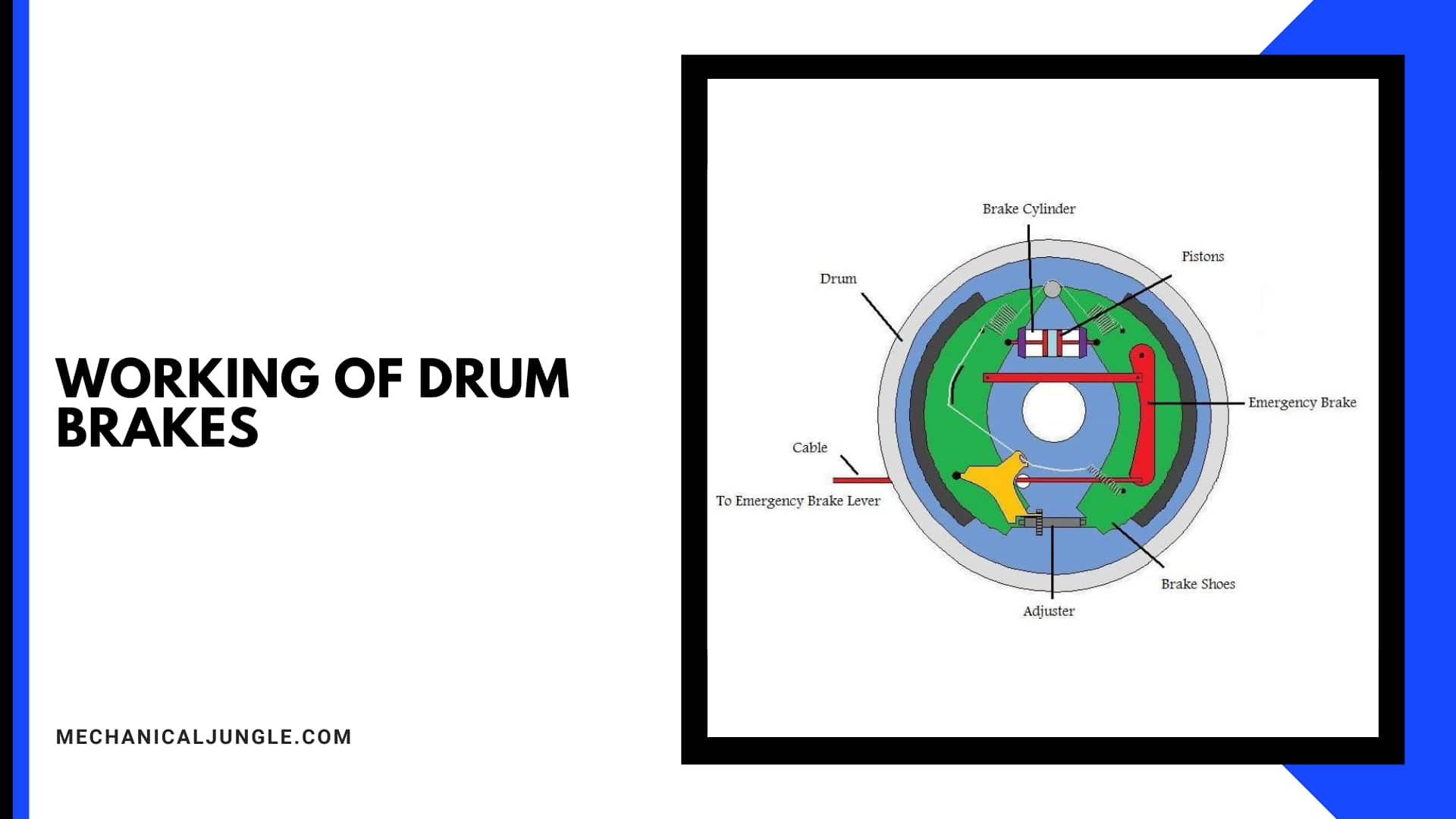

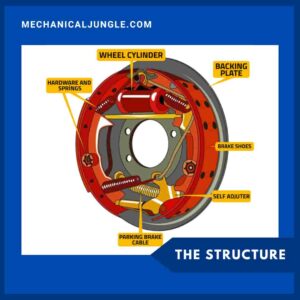
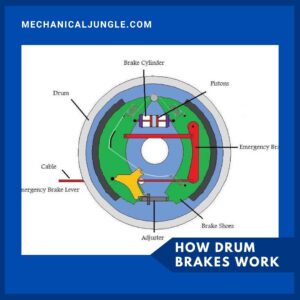
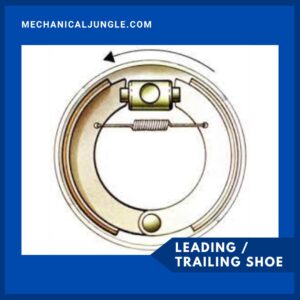
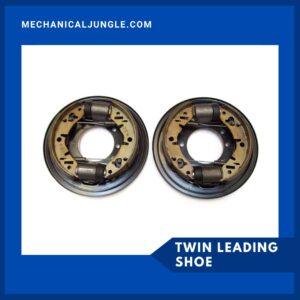
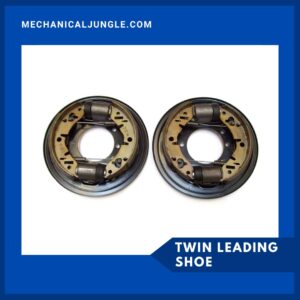
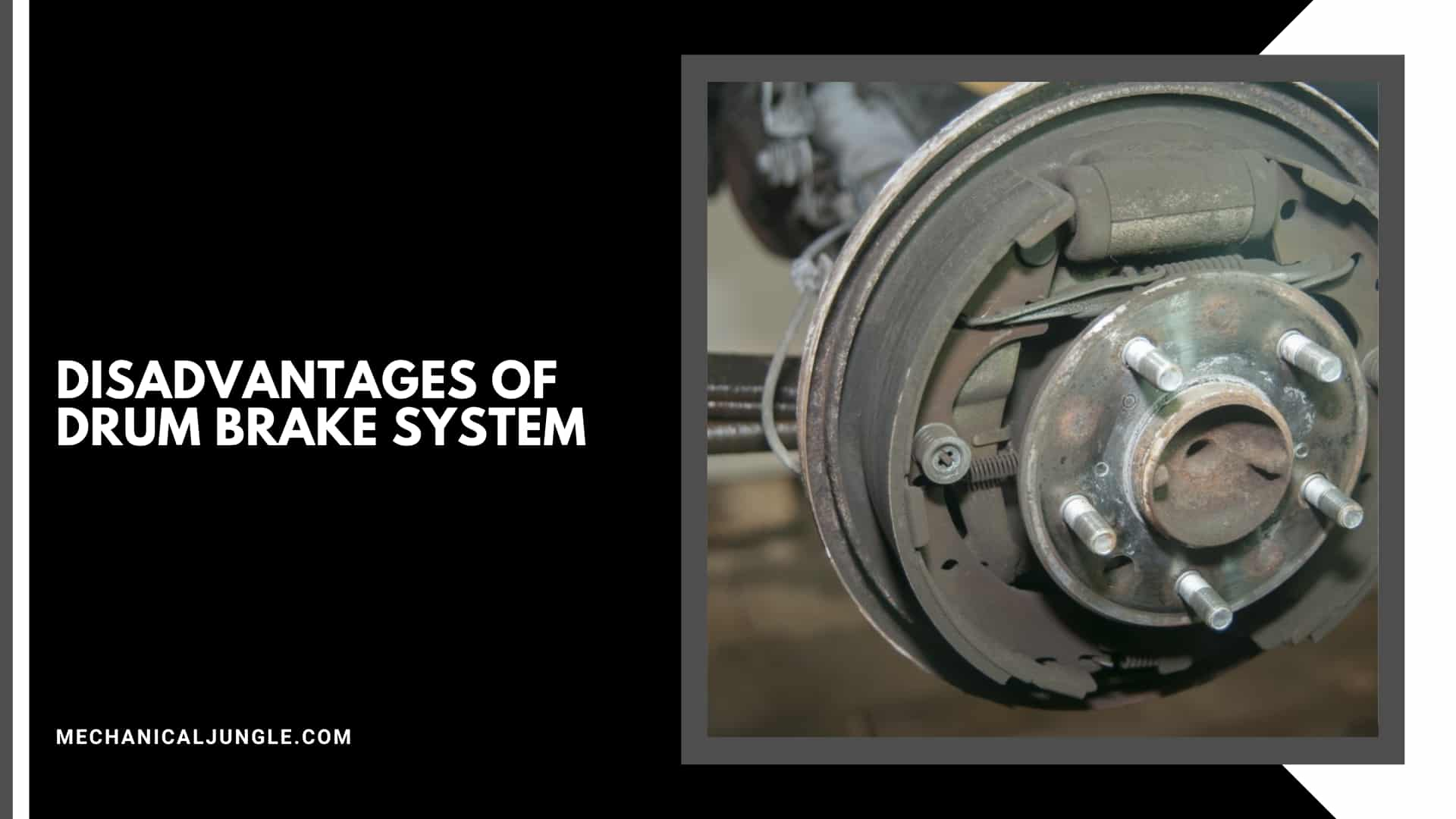

Leave a Reply